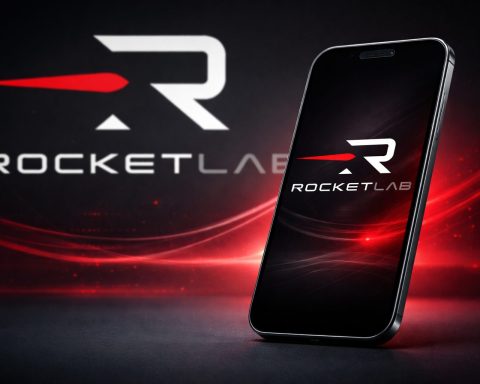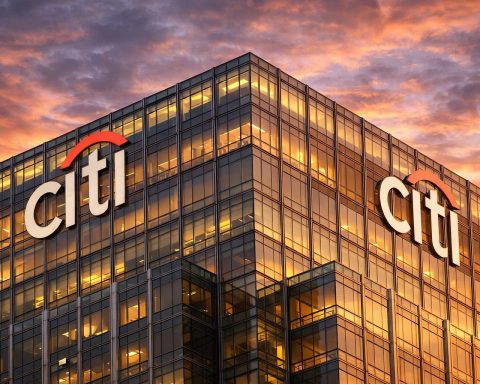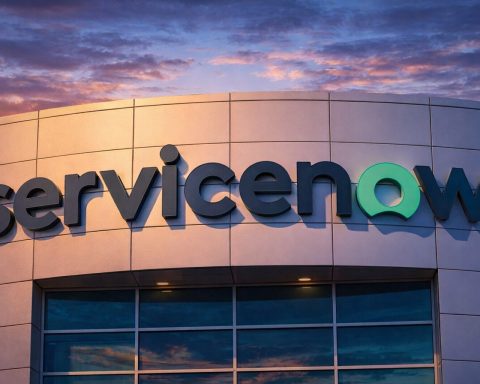- Nvidia reached a $4 trillion market capitalization, becoming the first public company to do so, with its shares closing above the milestone in early July.
- Nvidia remains near record highs as AI demand powers its chips, while the Nasdaq and S&P 500 posted fresh record closes in mid‑August driven by AI mega‑caps.
- AMD’s data-center chip revenue rose 14% but fell short of expectations, triggering a more than 5% drop in its stock.
- Super Micro Computer fell 18% after guiding lower results, as investors perceived a loss of AI server share to larger rivals.
- Ray Dalio’s Bridgewater more than doubled its Nvidia stake to 7.23 million shares worth about $1.14 billion, and also boosted Alphabet and Microsoft stakes by 84% and 112%.
- Palantir posted a Q2 revenue of $1.0 billion, raised its 2025 sales outlook to $4.14–4.15 billion from about $3.9 billion, with U.S. government revenue up 53% YoY to over $426 million.
- Tesla scrapped its Dojo training hardware and shifted focus to the AI5 and AI6 chips for onboard inference, signing a $16.5 billion deal with Samsung to produce AI6 chips.
- OpenAI released GPT-5, with annualized revenue run‑rate around $12 billion in the first seven months of 2025 and a forecast to $20 billion by year‑end, while SoftBank leads a new $40 billion funding round valuing OpenAI at about $500 billion; OpenAI employees may sell up to $6 billion of shares.
- The U.S. government agreed to take 15% of revenue from advanced chip sales to China to ease export controls, a structure that alarms some lawmakers about government‑private lines, while China’s regulators pressed Nvidia for security assurances on the H20 chip.
- Europe’s AI adopters slump as SAP falls over 7% in a day and Sage Group and Capgemini slide about 10–14% since mid‑July, while Taiwan’s TAIEX hits an all‑time high on August 18 led by TSMC and MediaTek.
Wall Street’s AI Darlings Hit Highs (and a Few Stumbles)
Major artificial intelligence (AI) plays are reaching unprecedented heights in U.S. markets. Nvidia – the poster child of the AI boom – recently notched a staggering $4 trillion market capitalization, becoming the first public company ever to do so [1]. Its stock closed above that milestone for the first time in early July [2], and it remains near record highs as investors bet on insatiable demand for Nvidia’s AI chips. The broader tech-heavy indexes have rallied accordingly – the Nasdaq and S&P 500 both set fresh record closes in mid-August, fueled largely by AI-driven mega-caps [3]. Other “Magnificent 7” stocks have joined the surge: Tesla jumped nearly 5% on one recent day [4] amid optimism for its tech prospects, and Meta, Alphabet, and Microsoft all trade near multi-year highs after strong Q2 earnings showed AI investments driving growth [5] [6]. However, a few hot names remind traders that the AI trade can cut both ways. Advanced Micro Devices (AMD) tumbled over 5% after underwhelming data-center chip sales – its 14% revenue rise in that segment fell slightly short of lofty expectations, shaking confidence in AMD’s AI growth narrative [7] [8]. Server maker Super Micro Computer plummeted 18% on a guidance miss as it appeared to be losing AI server market share to larger rivals [9] [10]. Analysts noted that any perceived weakness in the high-expectation AI arena can trigger sharp investor backlash [11]. On the whole, though, Wall Street’s appetite for AI exposure remains voracious – especially for the proven leaders.
Investors Pile Into Big Tech Amid AI Boom
Fresh regulatory filings reveal that major hedge funds aggressively doubled down on Big Tech through the second quarter, positioning for an AI-fueled run-up. In a dramatic shift from earlier caution, titans like Bridgewater Associates and Tiger Global poured into the sector, adding to positions in AI leaders. Ray Dalio’s Bridgewater more than doubled its stake in Nvidia last quarter – ending June with 7.23 million Nvidia shares (a $1.14 billion bet), its single largest stock holding [12]. Bridgewater also boosted its Alphabet and Microsoft stakes by 84% and 112%, respectively [13]. Likewise, Chase Coleman’s Tiger Global added millions of shares across Amazon, Alphabet, Nvidia, Microsoft, and Meta [14]. Funds are even snapping up enablers of the AI ecosystem: Tiger took a new stake in chip-equipment maker Lam Research [15], and multiple funds bought into Nvidia-backed cloud startup CoreWeave [16] [17]. This frenzy reflects renewed momentum investing after a brief AI stock pullback in the spring [18]. As Bernstein analyst Michael Chiang observed, cloud giants have sent a clear message that “this is an arms race, the AI opportunity is enormous, and spending will continue to be aggressive” to seize it [19]. With industry capital expenditures soaring to expand AI capacity [20], big money is positioning for a prolonged boom in earnings. At least 28 Wall Street analysts hiked their price targets on Alphabet and similar moves followed for Microsoft after those companies’ latest results, reflecting growing conviction in their AI prospects [21]. The flood of institutional cash into AI winners underscores investors’ view that these firms will remain dominant as AI reshapes the economy.
Earnings & Outlook: Palantir Shines in AI Gold Rush
Amid the AI euphoria, Palantir Technologies has emerged as one of 2025’s standout performers, leveraging a surge in demand for AI-powered data analytics. The company delivered a record $1 billion in Q2 revenue – its first billion-dollar quarter – beating forecasts and prompting Palantir to raise its full-year outlook for the second time this year [22] [23]. Palantir now projects $4.14–4.15 billion in 2025 sales (vs. ~$3.9 billion prior), signaling sustained demand for its AI-driven platforms from both commercial clients and government agencies [24] [25]. “They have accelerants on both sides (commercial and government),” noted D.A. Davidson analyst Gil Luria, pointing out that Palantir’s capabilities now allow it to act as lead contractor on increasingly large projects in the public sector [26]. U.S. government revenue for Palantir jumped 53% year-on-year in Q2, topping $426 million (over 42% of total sales) amid a Pentagon shift toward AI and non-traditional software providers [27] [28]. The company’s stock has more than doubled in 2025 (up over 100%), making it one of the S&P 500’s top gainers as investors bet Palantir will be a prime “AI goldmine” in both defense and industry [29] [30]. Executives say the euphoria is justified – Palantir beat earnings estimates and is signing massive deals (the U.S. Army may procure up to $10 billion of its services over a decade) amid President Trump’s national security push [31] [32]. The company is hiring aggressively to meet demand, though its CFO cautions that expenses will rise in the near term as it competes for scarce AI talent [33] [34]. Palantir’s blockbuster quarter shows how the AI arms race is lifting not just infrastructure suppliers but also software players positioned to apply AI for high-value insights.
Not all earnings news has been rosy – AMD, despite 40% stock gains this year, gave investors pause with an AI outlook that “did not show the upside some were looking for,” as Jefferies analysts put it [35] [36]. Its data-center chip revenues rose only modestly and missed some targets due to U.S. export curbs on its MI300 series AI accelerators (a drag it hopes will ease as licenses for China improve) [37] [38]. Meanwhile, enterprise software firms are feeling pressure from AI newcomers (more on Europe below), and IBM – a legacy AI player with its Watson platform – is striving to stay relevant by showcasing new AI partnerships (like powering fan experiences at the U.S. Open tennis tournament) [39]. Overall, this earnings season reinforced that companies directly enabling AI (chips, cloud services, data platforms) are reaping immediate rewards, whereas those simply using AI face a more complicated, longer-term picture.
Tech Moves: Tesla’s Dojo U-Turn and New AI Launches
Several strategic shifts and product developments marked the AI landscape in recent days. In a surprise move, Tesladisbanded its “Dojo” supercomputer project, pivoting away from in-house AI training chips. CEO Elon Musk reportedly ordered the Dojo team – which had built custom silicon to train Tesla’s self-driving AI on massive video data – to be reassigned, saying it “doesn’t make sense for Tesla to divide its resources and scale two…different AI chip designs” [40]. Instead, Musk announced that all effort is now focused on Tesla’s next-generation AI5 and AI6 chips for onboard inference, which he claims will be “excellent for inference and at least pretty good for training” [41]. The abrupt U-turn comes after Morgan Stanley once valued Dojo at $500 billion in potential for Tesla [42]. By shelving its custom training hardware, Tesla essentially concedes that relying on external GPU suppliers (like Nvidia) or outsourcing fabrication is more practical than going it alone – a notable validation of the existing AI chip leaders. Musk’s new strategy also includes a $16.5 billion deal with Samsung to produce the forthcoming AI6 chips for Tesla’s future self-driving cars and humanoid robots [43]. The news initially lifted Tesla shares and was seen as the automaker refocusing on its core strengths in applying AI, rather than chip design. “All effort” on the more targeted AI5/AI6 suggests Tesla wants to streamline and possibly hasten the deployment of advanced driver-assistance AI across its fleet, even if it means leaning on partners for the heavy computing power.
In the software arena, the pace of AI advancement remains blistering. OpenAI just this month quietly released its GPT-5 model, the latest evolution of the technology behind ChatGPT [44]. The arrival of GPT-5 – reportedly significantly more capable than its predecessor – has industry observers asking which businesses might be disrupted next. OpenAI’s rapid progress is not only transforming products (from coding assistants to creative tools) but also driving corporate deal-making. In an eye-opening development, OpenAI’s own employees are looking to sell up to $6 billion of their shares to outside investors including SoftBank, in a deal that would value the company at a jaw-dropping $500 billion [45]. (That valuation is up sharply from $300 billion earlier this year, underscoring the explosive growth in OpenAI’s user base and revenue) [46]. According to a source, OpenAI’s annualized revenue run-rate has doubled in the first seven months of 2025 to about $12 billion, with projections to hit $20 billion by year-end [47]. Such numbers attracted SoftBank – the Japanese tech conglomerate – which is reportedly leading a new $40 billion funding round for OpenAI [48]. The outsized bet by SoftBank (itself publicly traded) highlights how even companies not listed on stock exchanges are influencing publicly traded ones – SoftBank’s shares often move on its tech investments, and industry rivals are feeling the heat from OpenAI’s breakneck expansion. Separately, industry giants continue to roll out AI partnerships: for example, IBM announced it is infusing the U.S. Open tennis tournament with AI-powered fan features like automated match highlights and commentary, showcasing its Watsonx AI capabilities in sports [49]. And Oracle and Salesforce both unveiled new generative AI tools for enterprise customers in recent weeks (part of a wave of enterprise AI product launches aiming to augment white-collar workflows). In short, the AI product pipeline – from consumer chatbots to industry-specific solutions – is surging, and companies are racing to iterate or pivot so they don’t fall behind.
AI Under Scrutiny: Chip Export Breakthroughs and Policy Crackdowns
Regulatory and geopolitical currents around AI intensified over the August 17–18 window, yielding both tailwinds and new challenges for AI companies. In a notable thaw, the U.S. government has begun loosening its grip on advanced chip exports to China – albeit with strings attached. President Donald Trump, who returned to the White House in January, confirmed a deal allowing Nvidia and AMD to resume selling certain scaled-down AI chips in China (notably Nvidia’s upcoming “Blackwell” GPU) [50] [51]. To assuage national security hawks, the administration negotiated an unprecedented arrangement: Nvidia and AMD must pay the U.S. government 15% of any revenue from these advanced chip sales into China [52] [53]. A U.S. official said Washington does not believe exporting the current restricted chips (like Nvidia’s H20, a Hopper-based processor for China) compromises security [54] [55]. Still, some investors balk at the precedent of Washington taking a direct cut. The deal’s “quasi-state ownership” structure could be risky, warns Baird strategist Ross Mayfield, noting it blurs lines between government and private enterprise [56]. Indeed, lawmakers from both parties have expressed unease that even watered-down U.S. AI chips might help Beijing “leapfrog” American capabilities if bought in large quantities [57]. One former White House tech security director cautioned that with enough of these chips, China could build “frontier-scale AI supercomputers” that erode the U.S. lead [58].
Beijing, for its part, is sending mixed signals in response. On one hand, Chinese officials are pushing for relief from U.S. chip curbs as a bargaining chip in trade talks – reportedly urging Washington to ease export controls on high-bandwidth memory (HBM) chips that Chinese firms need for AI systems [59] [60]. (HBM parts are critical companions to GPUs like Nvidia’s, and bans on them have hampered companies like Huawei in developing advanced AI chips [61].) On the other hand, China’s state media has stepped up rhetoric casting doubt on the U.S. chips it’s now allowed to import. An outlet affiliated with CCTV blasted Nvidia’s H20 AI chips as “not advanced, nor safe” for China, even suggesting they contain hardware “backdoors” that could enable remote shutdown [62] [63]. Nvidia flatly denied any backdoors, reiterating that its products do not allow unauthorized access or control [64] [65]. This skepticism may be posturing to bolster Chinese domestic chip efforts; notably, Beijing’s cyberspace regulator summoned Nvidia at end-July to demand security assurances on the H20 [66]. As the U.S. and China inch toward a possible leaders’ summit, AI technology remains a flashpoint – but also an area where carefully calibrated compromises (like selling “hobbled” chips with revenue kickbacks) are emerging.
Meanwhile, Western regulators are scrutinizing AI on other fronts, especially regarding privacy and safety. In Washington, Congress turned its eye to Meta after reports that its AI chatbots engaged in inappropriate conversations. Senator Josh Hawley announced an investigation into Meta’s generative AI policies, following a Reuters exposé that internal rules had allowed Meta’s AI bots to hold “romantic or sensual” chats with teenage users [67]. Lawmakers from both parties were alarmed by the revelations and are demanding Meta hand over documents on who approved those chatbot behaviors and for how long [68] [69]. Meta quickly removed the problematic examples and claims they were errors, but it declined to comment on Hawley’s probe [70] [71]. The episode highlights rising U.S. political pressure to ensure AI products (especially those interacting with children or providing medical advice) have guardrails – a trend that could herald new regulations for the tech industry. Across the Atlantic, the European Union is finalizing its sweeping AI Act, and even before it’s law, the EU has put Big Tech on notice with hefty fines for anticompetitive practices (Google was just fined $36 million in one case, though unrelated to AI) [72] [73]. From export licenses to ethics inquiries, the message is clear: as AI’s influence grows, so too does government oversight. How these policy maneuvers play out will significantly impact where and how AI companies can do business.
Global AI Sector: Europe’s ‘Adopters’ Stumble, Asian Tech Climbs
The AI investing tide has lifted many U.S. and Asian tech boats, but in Europe it’s been a different story in recent weeks. A cluster of European companies that eagerly embraced AI – yet don’t produce core AI tech themselves – saw their stocks knocked back by a sudden wave of selling [74]. Investors are reevaluating the so-called “AI adopters” amid concern that ever-more-powerful AI models could disrupt the very software and consulting services those firms provide [75] [76]. For instance, shares of Germany’s enterprise software giant SAP plunged over 7% in one day (their worst drop since 2020) after an analyst downgrade, and UK software maker Sage Group and France’s Capgemini are down ~10–14% since mid-July [77] [78]. These companies had run up earlier this year as European investors searched for ways to ride the AI wave despite Europe’s dearth of big AI-native firms [79]. But the launch of cutting-edge AI systems this summer appears to have “prompted a rethink” of those bets [80]. Last week, OpenAI released its GPT-5 model – an advancement that, coupled with new domain-specific AI like Anthropic’s Claude for Finance, is making each AI iteration “multiples more capable” than the last, says Kunal Kothari of Aviva Investors [81] [82]. “The market’s thinking: ‘oh, wait, that challenges this business model,’” Kothari explained, noting that tools like Claude’s financial AI directly encroach on data firms such as London Stock Exchange Group (LSEG) that were betting on proprietary data and software [83]. In other words, if general AI can now analyze financial data or engineer software solutions, some established European players may find their moats shrinking. The result: European AI adopter stocks have lagged, even as the STOXX 600 index ticked up modestly and U.S. tech giants forged ahead to record highs [84] [85]. High valuations made those European names especially vulnerable – SAP, for example, was trading at ~45× earnings (versus ~17× for the broader market), so any whiff of AI-related risk triggered an outsized sell-off [86].
In Asia, by contrast, the AI boom is buoying markets to new peaks. Taiwan’s stock market just hit an all-time high on August 18, driven by its semiconductor champions and electronics suppliers riding the AI server wave [87] [88]. The TAIEX index broke a record as heavyweight TSMC (the world’s main producer of advanced AI chips) recovered from a slight dip to post gains, and chip designer MediaTek surged on strong demand [89]. Taiwanese suppliers of niche tech components are also soaring: makers of glass fibers and power backup units for data centers jumped 5–7% in Taipei trading, as next-gen AI servers enter mass production, straining supply chains and boosting prices for parts like copper-clad laminates [90] [91]. Even co-packaged optics companies (which integrate laser interconnects for higher bandwidth between AI chips) hit their daily price limits amid “AI-driven demand” for faster networking gear [92]. Meanwhile, Chinese tech shares have been climbing – China’s blue-chip CSI 300 index reached its highest level in 10 months [93] – aided by an overall risk-on mood and optimism that U.S.-China tech tensions may ease. Investors in China are also enthusiastic about the country’s homegrown AI contenders: firms like Baidu, Alibaba, and SenseTime have all touted their AI models (from Baidu’s ERNIE chatbot to Alibaba’s cloud AI offerings), which could help narrow the gap with Western rivals. However, Chinese AI firms face their own headwinds, from U.S. export limits to domestic regulatory scrutiny on deepfakes and data usage. Still, Beijing’s strategic focus on AI supremacy – and the sheer size of its market – means Chinese AI stocks remain a key part of the global story.
All told, the AI revolution is shaking up markets across continents. In the U.S. and Asia, it’s creating trillion-dollar titans and invigorating entire supply chains, while in Europe it’s forcing a hard look at who will thrive with AI versus who might be left behind by AI. “We’re at the stage now where every iteration of GPT or Claude that comes out…challenges a business model,” as Aviva’s Kothari put it [94]. Companies and investors worldwide are learning that in the race to harness artificial intelligence, the only constant is rapid change – with fortunes rising and falling as fast as the technology itself.
Sources: Bloomberg; Reuters; CNBC; company press releases [95] [96] [97] [98] [99] [100] [101] [102] [103] [104] [105] [106] [107] [108] [109].
References
1. www.reuters.com, 2. www.reuters.com, 3. www.reuters.com, 4. www.reuters.com, 5. www.reuters.com, 6. www.reuters.com, 7. www.reuters.com, 8. www.reuters.com, 9. www.reuters.com, 10. www.reuters.com, 11. www.reuters.com, 12. www.reuters.com, 13. www.reuters.com, 14. www.reuters.com, 15. www.reuters.com, 16. www.reuters.com, 17. www.reuters.com, 18. www.reuters.com, 19. www.reuters.com, 20. www.reuters.com, 21. www.reuters.com, 22. www.reuters.com, 23. www.reuters.com, 24. www.reuters.com, 25. www.reuters.com, 26. www.reuters.com, 27. www.reuters.com, 28. www.reuters.com, 29. www.reuters.com, 30. finance.yahoo.com, 31. www.reuters.com, 32. www.reuters.com, 33. www.reuters.com, 34. www.reuters.com, 35. www.reuters.com, 36. www.reuters.com, 37. www.reuters.com, 38. www.reuters.com, 39. www.prnewswire.com, 40. www.reuters.com, 41. www.reuters.com, 42. www.reuters.com, 43. www.reuters.com, 44. www.reuters.com, 45. www.reuters.com, 46. www.reuters.com, 47. www.reuters.com, 48. www.reuters.com, 49. www.prnewswire.com, 50. www.reuters.com, 51. www.reuters.com, 52. www.reuters.com, 53. www.reuters.com, 54. www.reuters.com, 55. www.reuters.com, 56. www.reuters.com, 57. www.reuters.com, 58. www.reuters.com, 59. www.reuters.com, 60. www.reuters.com, 61. www.reuters.com, 62. www.reuters.com, 63. www.reuters.com, 64. www.reuters.com, 65. www.reuters.com, 66. www.reuters.com, 67. www.reuters.com, 68. www.reuters.com, 69. www.reuters.com, 70. www.reuters.com, 71. www.reuters.com, 72. www.reuters.com, 73. www.reuters.com, 74. www.reuters.com, 75. www.reuters.com, 76. www.reuters.com, 77. www.reuters.com, 78. www.reuters.com, 79. www.reuters.com, 80. www.reuters.com, 81. www.reuters.com, 82. www.reuters.com, 83. www.reuters.com, 84. www.reuters.com, 85. www.reuters.com, 86. www.reuters.com, 87. www.taiwannews.com.tw, 88. www.taiwannews.com.tw, 89. www.taiwannews.com.tw, 90. www.taiwannews.com.tw, 91. www.taiwannews.com.tw, 92. www.taiwannews.com.tw, 93. www.reuters.com, 94. www.reuters.com, 95. www.reuters.com, 96. www.reuters.com, 97. www.reuters.com, 98. www.reuters.com, 99. www.reuters.com, 100. www.reuters.com, 101. www.reuters.com, 102. www.reuters.com, 103. www.reuters.com, 104. www.reuters.com, 105. www.reuters.com, 106. www.reuters.com, 107. www.reuters.com, 108. www.reuters.com, 109. www.taiwannews.com.tw










